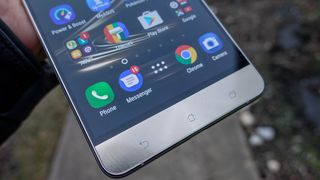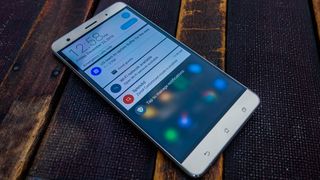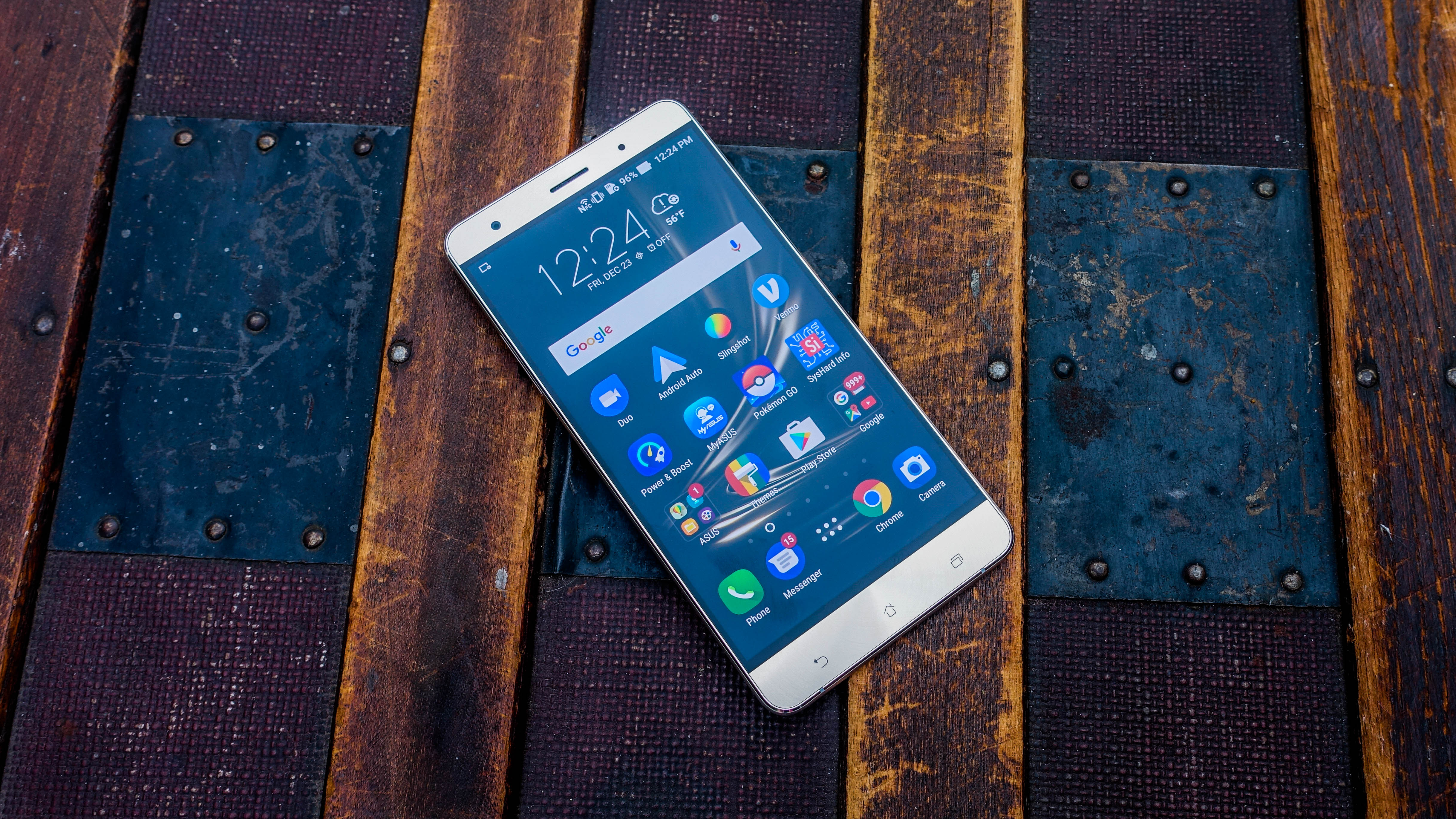TechRadar Verdict
Asus Zenfone 3 Deluxe is a much better Android phone than its predecessor thanks to its full metal body design and, for the price, leading specs, including 6GB of RAM, 64GB of storage and a 23MP camera. It also now has the Android Oreo update.
Pros
- +
6GB of RAM onboard
- +
Slick antenna-less metal design
- +
Starts at 64GB of storage
Cons
- -
Hidden cost: Snapdragon 821 version
- -
1080p display unfit for VR
- -
Single, bottom-firing speaker
Why you can trust TechRadar
Zenfone 3 Deluxe represents a major upgrade to Asus' spelling-challenged smartphone series with a component design and specs you won't find on many other Android phones at this price range.
Update: Although the Asus Zenfone V is the newest Asus phone you can buy, the you can still find the Asus Zenfone 3 Deluxe on Amazon for cheap, and it's been updated with Google's new Android Oreo software. Here's our updated Zenfone 3 Deluxe review.
The smartphone is made a name for itself at Computex 2016 with 6GB of RAM. All but one (the OnePlus 3T) of our best phones ended 2016 with 4GB of RAM, which prevents slowdown with multiple apps open.
This phone also debuted the Snapdragon 821 chipset worldwide (though the Google Pixel and Pixel XL launched with the chip first in the West) and starts with 64GB of internal storage (going up to 256GB).
Of course, there’s also a more reasonably priced Snapdragon 820 version – the one we tested – but you wouldn’t know that from Asus’s 821-touting product page. The 820 is in fine print.

The Zenfone 3 Deluxe camera puts big numbers on the specs sheet, too, with a 23MP sensor, and so does the 5.7-inch display and it dual SIM/microSD card unlocked phoned capabilities.
But do these specs compute into anything meaningful now that it runs Android Oreo? Let’s explore this ‘fone.’
Asus Zenfone 3 Deluxe price
- $499 in the US, strictly on GSM carriers like AT&T and T-Mobile
- An Unlocked phone, but not compatible with Verizon or Sprint
- Won't come to the UK or Australia, according to Asus
- Be careful: a cheaper, but slower version has the same name
The Asus Zenfone 3 Deluxe price isn’t very straightforward because there are so many versions in the phone series: Zenfone 3, Zenfone 3 Deluxe, Zenfone 3 Max, Zenfone 3 Laser and even a 6.8-inch Zenfone 3 Ultra. It's now joined by an Asus Zenfone 3 Zoom.
At launch, it costs $499 for the Zenfone 3 Deluxe with a 5.7-inch display and Snapdragon 820 chip in the US. The ZTE Axon 7 and OnePlus 3T are cheaper, but Asus’s phone has a bigger screen and longer battery life.
You would have paid $799 for the Asus Zenfone 3 Deluxe Special Edition to get the faster Snapdragon 821 chip, and there’s also a $369 “deal” for a Zenfone 3 Deluxe – but buyer beware, it has a 5.5-inch screen and slower Snapdragon 625 chip.
All of the prices have been reduced in 2018 since the Zenfone 3 Deluxe launched.
The Asus Zenfone 3 Deluxe hasn’t launched in the UK, but with direct conversion at about £403, it’ll likely cost you between £450 and £499 if ever it does. In Australia, it works out to about AU$659.
Design
- Full-metal unibody upgrade ditches its Asus’s cheap plastic origins
- Invisible antenna lines make for a smooth matte finish all around
- Three colors: Titanium Gray, Glacier Silver and Sand Gold
The Asus Zenfone 3 Deluxe is being touted as the world's first full-metal unibody phone with an invisible antenna design, and that's technically true.

Apple’s aluminum iPhone 7 still has antenna lines, and while LG G5 makes them invisible, it has a gap for modular add-ons; it isn't really unibody. Samsung Galaxy S7 Edge is made of glass.
That leaves the Zenfone 3 Deluxe to steal some thunder with a sleek look of its own. The matte gold version we’ve been testing does just that with a seamless, sometimes slippery back.
What’s most striking about this metal phone that it’s a vast improvement over the Asus Zenfone 2. It does away with the cheap plastic that made Zenfone 2’s design downright unlikable.
As much as we dug this predecessor's specs and the software customizations, it felt shoddy. Like, not even good plastic. This new Zenfone 3 Deluxe design rights that wrong.

The Zenfone 3 Deluxe measures 156.4 x 77.4 x 7.5 mm, which doesn't make it as slim as the ultra-thin Nexus 6P (7.3mm thin), but it's close and, when testing it, this phone felt better than the thicker, non-Deluxe Zenfone 3 (7.7mm thin) that’s never coming to the West.
The power button and volume rocker are now on the right side (instead on of the back), while an oddly shaped rectangular fingerprint sensor pad remains on back. You don't actually press it in.
Capacitive soft buttons line the phone’s bottom face, with home, back and recent. It goes against the trend of using purely on-screen buttons or including a physical home button on front.
It doesn't use on-screen buttons, which have become popular for helping minimizing bezels and expanding screen sizes. Samsung just took that route on the Samsung Galaxy S8 and Galaxy S8 Plus. But Asus's buttons are at least always at the ready and never vanish at the worst possible moment. Many people prefer this.

We had a big problem with Zenfone 2's top-mounted power button, which we described as 'squishy.' We’re happy to report that the Zenfone 3 Deluxe’s new power button fixes this issue.
Its side-mounted power button and volume rocker feel a bit shallow, but they’re at least clicky. This is all the more important than ever because the Deluxe camera can be launched by hitting the volume down button twice when the phone is asleep.

Like a lot of phones these days, it pivots to USB-C, sticks with one speaker (but of course promises stellar audio, according to the company's best marketing efforts) and comes in three colors: Titanium Gray, Glacier Silver and Sand Gold. We could only find the gold color readily in stock in the US.
Screen
- Full HD display still looks superb even with fewer pixels than rivals
- Great screen-to-body ratio beats the smaller iPhone 7 Plus screen
- Just don’t expect it to ever handle pixel-demanding VR
Asus Zenfone 3 Deluxe has a spacious 5.7-inch screen, and fills the large void of the recalled Samsung Galaxy Note 7. It’s missing that all-important embedded stylus, which is a long way off if you’re waiting for the Samsung Galaxy Note 8. But it fills your big screen-size needs.

There’s very little bezel on the sides and more screen space to work with thanks to the fact that the Super AMOLED display takes on a respectable 79% screen-to-body ratio (the iPhone 7 is stuck at about 67%).
The capacitive buttons do eat into significant screen space, but the display is still bigger than the iPhone 7 Plus, even though it has the roughly the same exact overall phone dimensions.
You won’t find any extra pixels on this 1080p display, as it skips the Quad HD trend powering many of its Android rivals. The souped-up version’s Snapdragon 821 chip supports 4K displays, but this one is far from that theoretical spec.

Instead, the Zenfone 3 Deluxe delivers a different perk: a much brighter Full HD display compared to what we experienced with the Zenfone 2. A bright display is far more important than additional pixels.
Taking the Zenfone 2 outside to snap photos was a headache due to its dull screen; we couldn't see what we were shooting and just hoping the photos turned out okay (they didn't, the Zenfone 2 camera was also mediocre).
We’re okay with Full HD 1080p displays on phones of this size, but the company’s working on an Asus VR headset. As we experienced with the Huawei VR headset, 1080p is problematic when the screen is sitting two inches from your face. Outside of that, this display looks great.

